Liposuction Anesthesia
The goal of liposuction anesthesia is to make patients comfortable and pain-free during their liposuction procedures, and ensure a speedy recovery. At Neinstein Plastic Surgery we have created an environment where we can offer everything from general anesthesia, to IV sedation and local anesthesia, in a fully-accredited operating room with Board- Certified Anesthesiologists who have over 30 years of experience.
When it comes to liposuction anesthesia, every patient is different, so the type of anesthesia that is best can vary from case-to-case. At Neinstein Plastic Surgery we discuss all aspects liposuction procedures and help patients evaluate and decide on the type of anesthesia that will be best for them.
Types of Liposuction Anesthesia
Local Liposuction, Tumescent Liposuction & Awake Liposuction
Local, tumescent and awake liposuction are all different terms for the same approach. In this approach, oral medication is provided 30 minutes before a liposuction procedure to relax the patient and block pain from occurring. Once oral medication is administered, patients enter our accredited operating room and a special numbing solution is applied under the skin and into the target liposuction areas. The patient is monitored by an anesthesia machine and there is no type of breathing tube required.
Candidates for Local Anesthesia
- Patients who are having a few areas being done (2-3 areas)
- Patients who are looking for the fastest recovery possible
Benefits of Local Anesthesia
- None of the risks associated with general anesthesia
- Faster recovery
Considerations
- Local anesthesia minimizes the number of areas that can be treated since the amount of numbing medication allowed is weight based. If patients want liposuction in multiple areas, they will not have enough numbing medication. In this scenario, patients will need multiple local procedures or change to a deeper type of sedation.
- Patients concerned about any sensation from surgery are not good candidates for local anesthesia (and this should be communicated to the surgical team).
At Neinstein Plastic Surgery, 70% of liposuction cases are performed with local awake tumescent liposuction. After over 1,000 cases, the surgical team has not encountered any negative patient experiences in the operating room.
IV Sedation or Twilight Anesthesia
IV Sedation is the second most common type of anesthesia and is becoming more popular with patients. With IV sedation, a board-certified anesthesiologist administers an intravenous medication to ensure the patients does not feel or remember the surgery. The patient is monitored by an anesthesia machine and there is no type of breathing tube required.
Candidates for IV Sedation
- Any patient may choose to have IV sedation for any case. Most commonly, patients having more than 3 areas of liposuction and patients who have some anxiety about being awake during a procedure select IV sedation.
Benefits of IV Sedation
- No awareness or memory of the procedure
- Procedure monitored by a Board Certified Anesthesiologist
Considerations
- Increase in cost (approximately $600-$2,000) depending on the length of procedure
- Patients become drowsy and must stay in the recovery room longer than patients who did not have IV sedation
General Anesthesia
General anesthesia for liposuction is typically used in larger cases. It involves receiving intravenous medication to ensure you are not aware and are unable to feel the procedure. There will typically also be airway support because surgery in these cases involve being on your stomach or face down for part of the procedure. When going under general anesthesia, many patients will add procedures such as breast surgery, arm lifts, tummy tucks, or thigh lifts to their surgical plans.
Candidates for General Anesthesia
- Patients having extensive and multiple different types of procedures
Benefits of General Anesthesia
- We are able to perform the spectrum of procedures you desire in one setting
Considerations
- There are increased risks associated with general anesthesia. While the risks are incredibly low, we still mitigate them in every possible way. We reduce risks of blood-clots by using massage boots or sequential compression devices to keep blood flowing during surgery, and use blood thinners as needed depending on the type of procedure and expected down time after surgery.

